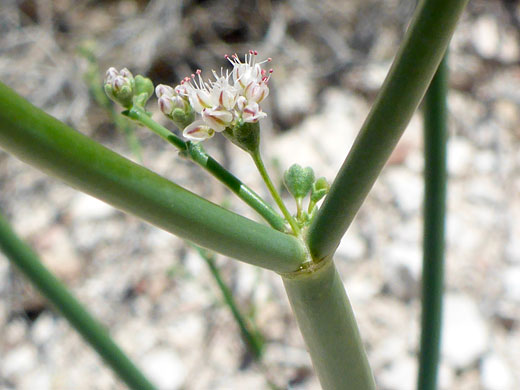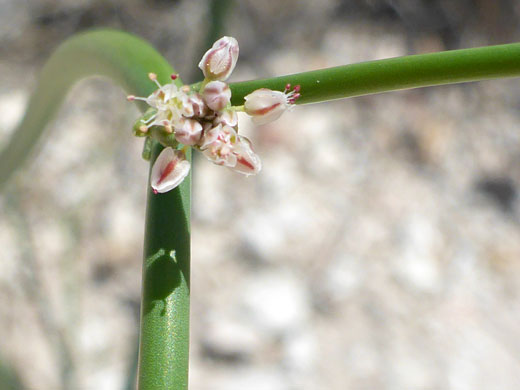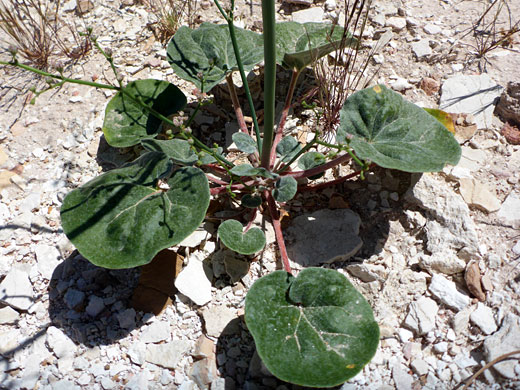Common names:
Flatcrown buckwheat, flat-topped buckwheat, skeletonweed
Family:
Scientific name:
Eriogonum deflexum
Main flower color:
Range:
Arizona, Utah, Nevada and southern California
Height:
Usually up to 3 feet, sometimes up to 6 feet
Habitat:
Desert scrub, roadsides, washes, slopes, flats, with sagebrush, creosote bush, pinyon-juniper; up to 9,500 feet
Leaves:
Basal, long stalked; blades are round to kidney-shaped, generally between 1 and 1.5 inches across, hairy underneath
Season:
January to December
Leaves of eriogonum deflexum grow only at the base, in a rosette, attached by relatively long (up to 3 inches), reddish stalks. They have a tomentose hair covering underneath, and are glabrous or sparsely tomentose above. Stems are always hairless, and may be somewhat inflated.
Flowers are produced in small clusters, at intervals along the stem branches and at the initial branching node; attached by hairless peduncles up to 1.5 inches long, usually hanging down (deflexed), but sometimes upright for the lowest clusters. Involucres are turbinate. The tiny flowers are white or pink, green or reddish along the midvein, and becoming pinker as they mature. The protruding stamens have white filaments and red anthers. Plants can bloom any month of the year.
Three varieties of eriogonum deflexum are var baratum, with narrow involucres and longer peduncles; the other two have wider involucres, and peduncles at most 0.2 inches; var deflexum with ovate or heart-shaped tepals (the most widespread variant), and var nevadense with oblong tepals.
Flowers are produced in small clusters, at intervals along the stem branches and at the initial branching node; attached by hairless peduncles up to 1.5 inches long, usually hanging down (deflexed), but sometimes upright for the lowest clusters. Involucres are turbinate. The tiny flowers are white or pink, green or reddish along the midvein, and becoming pinker as they mature. The protruding stamens have white filaments and red anthers. Plants can bloom any month of the year.
Three varieties of eriogonum deflexum are var baratum, with narrow involucres and longer peduncles; the other two have wider involucres, and peduncles at most 0.2 inches; var deflexum with ovate or heart-shaped tepals (the most widespread variant), and var nevadense with oblong tepals.
All Contents © Copyright The American Southwest | Comments and Questions | Contribute | Site Map




